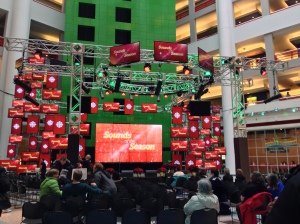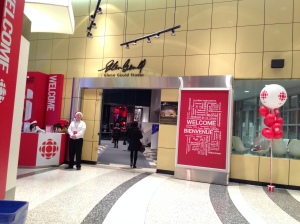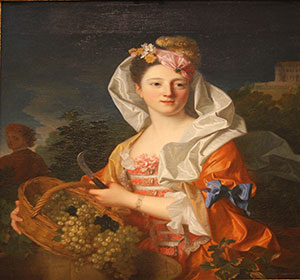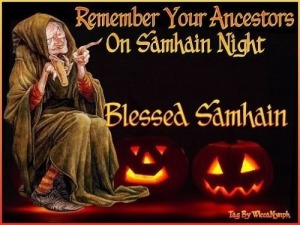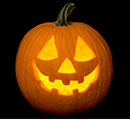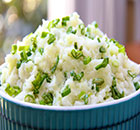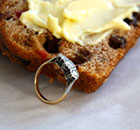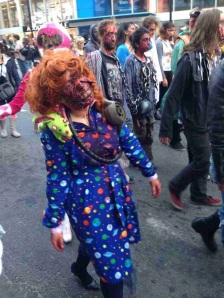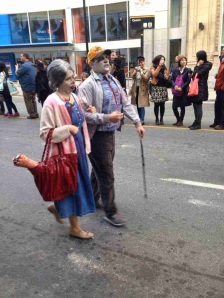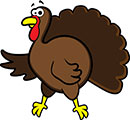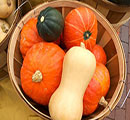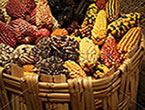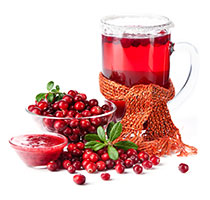Christmas is celebrated to remember the birth of of Jesus Christ, who Christians believe is the Son of God. The name ‘Christmas’ comes from the Mass of Christ (or Jesus). A Mass service is where Christians remember that Jesus died for us and then came back to life. The ‘Christ-Mass’ service was the only one that was allowed to take place after sunset (and before sunrise the next day), so people had it at Midnight. We get the name Christ-Mass, shortened to Christmas.
1. The history of Christmas trees?
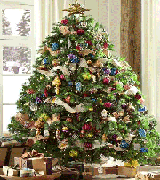 The evergreen fir tree has traditionally been used to celebrate winter festivals (pagan and Christian) for thousands of years. Pagans used branches of it to decorate their homes during the winter solstice and it made them think of the spring to come. The Romans used Fir Trees to decorate their temples at the festival of Saturnalia. Christians use it as a sign of everlasting life with God. Fir trees, cherry or hawthorn plants were used for Christmas Trees.
The evergreen fir tree has traditionally been used to celebrate winter festivals (pagan and Christian) for thousands of years. Pagans used branches of it to decorate their homes during the winter solstice and it made them think of the spring to come. The Romans used Fir Trees to decorate their temples at the festival of Saturnalia. Christians use it as a sign of everlasting life with God. Fir trees, cherry or hawthorn plants were used for Christmas Trees.
If you couldn’t afford a real plant, people made pyramids of woods and they were decorated to look like a tree with paper, apples and candles.
2. Why do we kiss under the mistletoe?
The tradition of kissing underneath mistletoe is from a Scandinavian myth. Jealous of Baldur the Beautiful, the god of light and spring, Loki, god of mischief, used a dart poisoned with mistletoe to kill the Baldur. Distraught by the death of her son, Frigga, the goddess of love, decreed that mistletoe would never again be used as weapon and that she would place a kiss on anyone who passed under it. In the 19th century the British started hanging mistletoe at Christmas. They believed the plant would make people more fertile and bring good luck, and warring clans would lay down their weapons if they met underneath a sprig of mistletoe. People began harvesting and buying mistletoe to use as decorations, and considered a kiss under the mistletoe to represent a promise to be married. Now the tradition of kissing under the mistletoe is one widely acknowledged during the Christmas season and seems firmly rooted in holiday customs.
spring, Loki, god of mischief, used a dart poisoned with mistletoe to kill the Baldur. Distraught by the death of her son, Frigga, the goddess of love, decreed that mistletoe would never again be used as weapon and that she would place a kiss on anyone who passed under it. In the 19th century the British started hanging mistletoe at Christmas. They believed the plant would make people more fertile and bring good luck, and warring clans would lay down their weapons if they met underneath a sprig of mistletoe. People began harvesting and buying mistletoe to use as decorations, and considered a kiss under the mistletoe to represent a promise to be married. Now the tradition of kissing under the mistletoe is one widely acknowledged during the Christmas season and seems firmly rooted in holiday customs.
3. What is the origin of the Cracker?
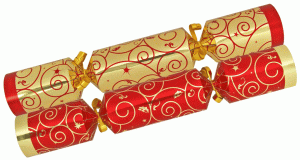 The Christmas cracker was invented in 1847 by London confectioner, Tom Smith. Inspired by the noise of a crackling fire, Smith came up with a chemical formula that, when added to a strip of paper and then pulled, produced a miniature explosive snap. He soon discarded the candies from his invention and filled them with mottos, paper hats and prized. The cracker soon became an indispensable part of Christmas dinners around the world.
The Christmas cracker was invented in 1847 by London confectioner, Tom Smith. Inspired by the noise of a crackling fire, Smith came up with a chemical formula that, when added to a strip of paper and then pulled, produced a miniature explosive snap. He soon discarded the candies from his invention and filled them with mottos, paper hats and prized. The cracker soon became an indispensable part of Christmas dinners around the world.
4.Why do we sing carols at Christmas?
Carols were first sung in Europe thousands of years ago, but these were not Christmas Carols. They were pagan songs, sung at the 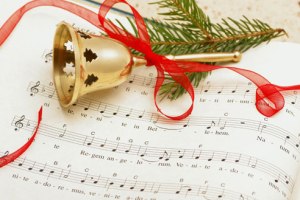 Winter Solstice celebrations. The word “carol” reflects uninhibited expression, deriving from the French word “Caroler,” which means “dancing around in a circle”. The Winter Solstice is the shortest day of the year, usually taking place around the 22nd December.
Winter Solstice celebrations. The word “carol” reflects uninhibited expression, deriving from the French word “Caroler,” which means “dancing around in a circle”. The Winter Solstice is the shortest day of the year, usually taking place around the 22nd December.
In the 13th century, Francis of Assisi, (who became the patron saint of animals and the environment after his death), wanted ordinary people to joyfully celebrate the birth of Jesus Christ, so he added religious lyrics to popular tunes of the time. These energetic tunes were in sharp contrast to the solemn hymns sung by the priests at Christmas services.
5.What’s a Yule Log?
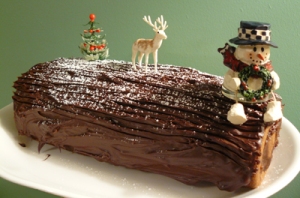 The custom of burning the Yule Log goes back to, and before, medieval times. Europeans would gather for a Yule festival to welcome the winter solstice at the end of December. They would burn large logs decorated with holly, pine cones or ivy and anointed with wine and salt, to cleanse the air of the previous year’s events. With the advent of Christianity, the Yule log tradition continued at Christmas, but due to small hearths, some Christians started baking Yule log cakes instead of burning actual logs.
The custom of burning the Yule Log goes back to, and before, medieval times. Europeans would gather for a Yule festival to welcome the winter solstice at the end of December. They would burn large logs decorated with holly, pine cones or ivy and anointed with wine and salt, to cleanse the air of the previous year’s events. With the advent of Christianity, the Yule log tradition continued at Christmas, but due to small hearths, some Christians started baking Yule log cakes instead of burning actual logs.
6.Why do we hand stockings?
Medieval legend says that St. Nicholas saved three daughters of a poor man from lives of 
shame by dropping bags of gold into their stockings. From this come the tradition of setting out a stocking for Santa Claus to fill with presents and treats. Given Santa’s usual means of entry-the chimney-the fireplace seemed the logical place for children to hand their stockings.
7.Why is the candy cane a symbol of Christmas?
 Legend has it that in the 1670s, the choirmaster of a cathedral in Cologne, Germany distributed candies shaped like a shepherd’s staff
Legend has it that in the 1670s, the choirmaster of a cathedral in Cologne, Germany distributed candies shaped like a shepherd’s staff
to children during the Christmas season. The idea was that the kids would make less noise if they were eating the large sweets. Their shape also enabled the candies to be hung from Christmas trees.
8.Why do we decorate with holly at Christmas?
During the holiday season, holly adorns houses all over the world. With its vibrant red berries and its deep green leaves, holly is a  popular ornament for those looking to enliven their homes with a little Christmas spirit. But since medieval times, the blood red colour of its berries and the prickles of its leaves have reminded Christians of the birth (and death) of Jesus, as alluded to in the famous English Christmas carol “The Holly and the Ivy.”
popular ornament for those looking to enliven their homes with a little Christmas spirit. But since medieval times, the blood red colour of its berries and the prickles of its leaves have reminded Christians of the birth (and death) of Jesus, as alluded to in the famous English Christmas carol “The Holly and the Ivy.”
9.Why do we give gifts at Christmas?
 The custom of giving and receiving presents at Christmas is to remind us of the presents of gold, frankincense and myrrh given to Jesus by the Magi, or wise men. Confined to the upper classes and the monarchy for years, by the 13th century Christmas gift-giving was extended to children, who often believed St. Nicholas, the patron saint of children, brought them presents. Today, we all give gifts at Christmas for our own reasons. For some, it is a way to celebrate the Christian holy day. For others, it is a special time to let family and friends know that you care by giving gifts.
The custom of giving and receiving presents at Christmas is to remind us of the presents of gold, frankincense and myrrh given to Jesus by the Magi, or wise men. Confined to the upper classes and the monarchy for years, by the 13th century Christmas gift-giving was extended to children, who often believed St. Nicholas, the patron saint of children, brought them presents. Today, we all give gifts at Christmas for our own reasons. For some, it is a way to celebrate the Christian holy day. For others, it is a special time to let family and friends know that you care by giving gifts.
• Frankincense was a perfume used in Jewish worship and, as a gift, it showed that people would worship Jesus.
• Gold was associated with Kings and Christians believe that Jesus is the King of Kings.
• Myrrh was a perfume that was put on dead bodies to make them smell nice and, as a gift, it showed that Jesus would suffer and die.
10.Why do we send Christmas cards?
In 1843, Englishman Sir Henry Cole decided he was too busy to write individual Christmas greetings to his family, friends and 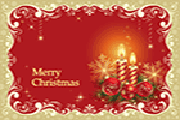 colleagues. So he asked his friend, the painter John Callcott Horsley, to design a card with a Christmas image and brief greeting. A thousand of Horsley’s cards were printed and sold and soon after, mass-printed cards replaced handwritten Christmas greetings in most of Europe and the U.S.
colleagues. So he asked his friend, the painter John Callcott Horsley, to design a card with a Christmas image and brief greeting. A thousand of Horsley’s cards were printed and sold and soon after, mass-printed cards replaced handwritten Christmas greetings in most of Europe and the U.S.
11.What do poinsettias have to do with Christmas?
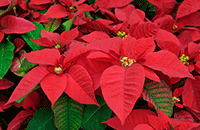 You can find a poinsettia’s scarlet, star-shaped leaves everywhere you turn during the holidays. Poinsettias are one of the most popular Christmas decorations around.
You can find a poinsettia’s scarlet, star-shaped leaves everywhere you turn during the holidays. Poinsettias are one of the most popular Christmas decorations around.
Mexican legend tells of a poor little girl who did not have a gift to leave at the altar for the Virgin Mary and the Christ Child on Christmas Eve. An angel appeared to her and suggested she bring the weeds at the side of the road. When she brought them into the church, they blossomed into the beautiful red plants we know as poinsettias (named for the first U.S. Ambassador to Mexico, Dr. Joel Roberts Poinsett), or Flores de Noche Buena in Mexico (Spanish for “flowers of the holy night”).
Reference:
1.Christmas traditions unwrapped
http://www.thestar.com/life/2013/12/24/christmas_traditions_unwrapped.html
2.Christmas traditions: Why do we kiss under mistletoe?
http://www.cbc.ca/news/canada/calgary/christmas-traditions-why-do-we-kiss-under-mistletoe-1.2863145
3. Why Do We Give Gifts at Christmas?
http://www.thelaboroflove.com/articles/why-do-we-give-gifts-at-christmas
4. What does the poinsettia have to do with Christmas?
http://people.howstuffworks.com/culture-traditions/holidays-christmas/christmas-poinsettia.htm
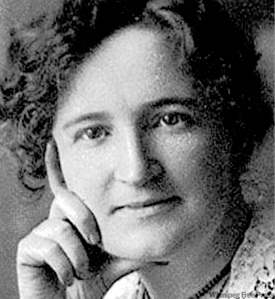 activist. In 1927, McClung and four other women: Henrietta Muir Edwards, Emily Murphy, Louise McKinney and Irene Parlby, who together came to be known as “The Famous Five” (also called “The Valiant Five”).
activist. In 1927, McClung and four other women: Henrietta Muir Edwards, Emily Murphy, Louise McKinney and Irene Parlby, who together came to be known as “The Famous Five” (also called “The Valiant Five”). Never explain. Your friends don’t need it and your enemies will not believe you anyway. – Elbert Hubbard (1856-1915) U.S. writer
Never explain. Your friends don’t need it and your enemies will not believe you anyway. – Elbert Hubbard (1856-1915) U.S. writer Never retract, never explain, never apologize. Get the thing done and let them howl. – Nellie McClung (1873-1951) Canadian social reformer
Never retract, never explain, never apologize. Get the thing done and let them howl. – Nellie McClung (1873-1951) Canadian social reformer










